Give yourself an antioxidant boost with this super-tasty Carrot Juice recipe, made with celery and apples. Slightly sweet and perfectly balanced, with a delicate tinge of ginger. Five ingredients and two steps are all that’s needed to make a healthy homemade juice minus the added sugar and the price tag. Learn how to make carrot juice below!
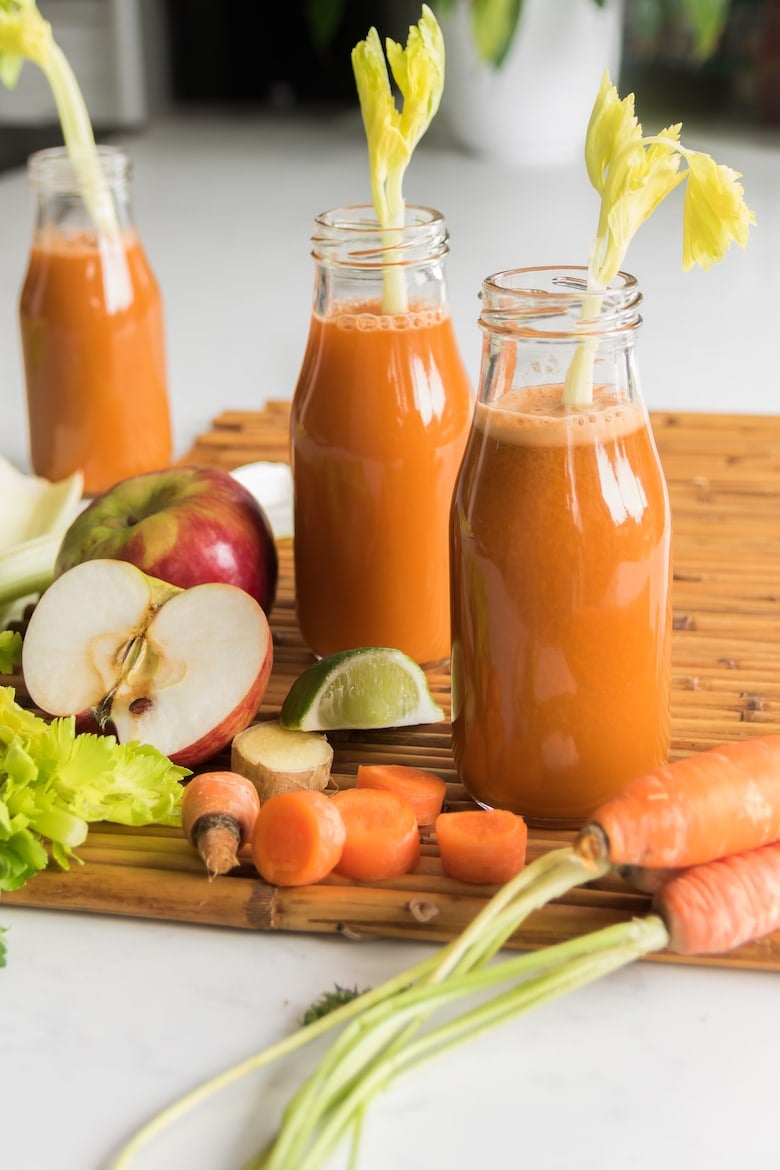
During the colder months, some of us succumb to colds, flu and other nasty viruses. I think we can take proactive steps to support our immune system and give it a fighting chance against infection. Adopting a healthy lifestyle, getting adequate sleep, eating plenty of vegetables and fruits, including movement in our daily routine, managing stress, and avoiding cigarette smoke are all essential aspects for health and wellbeing.
Besides eating various foods, I also love homemade juices as a quick strategy to keep nourished. Juices are a great way to give your body an antioxidant boost – especially with this super-tasty carrot juice. I love the fact that it’s not overly sweet or pungent, it’s simple to pull off and quickly gives me the nutrition I need for both prevention and recovery.Is Juicing Actually Healthy?
Think of Juices as an Addition and Not a Substitution to Your Diet
Health Benefits of Carrot Juice
Carrots have a high water content, and are an especially great source of beta carotene, fibre, vitamin K1, potassium, along with antioxidants. Their antioxidants have been linked to reducing the risk of some types of cancers.
I commonly hear that drinking homemade juices means you end up missing out on all the fibre – that’s thrown away (pulp). So, what you’re getting are calories and sugar (from the fruits and vegetables plus vitamins, minerals and antioxidants). Of course, I would always suggest you get your fruits and vegetables in their “whole” state. But many folks struggle with this, and homemade juices may offer a more palatable solution and are far better than their sugar-laden store-bought counterparts.
People also tell me that juices are “too sweet.” Now that’s true if all you’re using is fruits. You can certainly mix things up. What I love about this recipe is that there’s so much flexibility to add different combinations of fruits with vegetables.
You can play around with the amounts to find a recipe that suits you. On top of this, if you’re someone who doesn’t enjoy eating certain whole fruits and vegetables, juicing may be a fun way to add them to your diet and experiment with new foods you usually wouldn’t eat.
Now hold your horses – I am not saying juicing is better than eating whole fruits and vegetables. It’s yet another novel way to incorporate more fruits and vegetables into your diet and bring variety.
Who doesn’t want variety?! Remember that juicing does extract all the fibre from the fruits and veg, and therefore you will absorb juices faster than, say, a smoothie – which contains all the fibre. If you enjoy juicing but find that they can cause a spike in your blood sugars, here are some tips to help you.
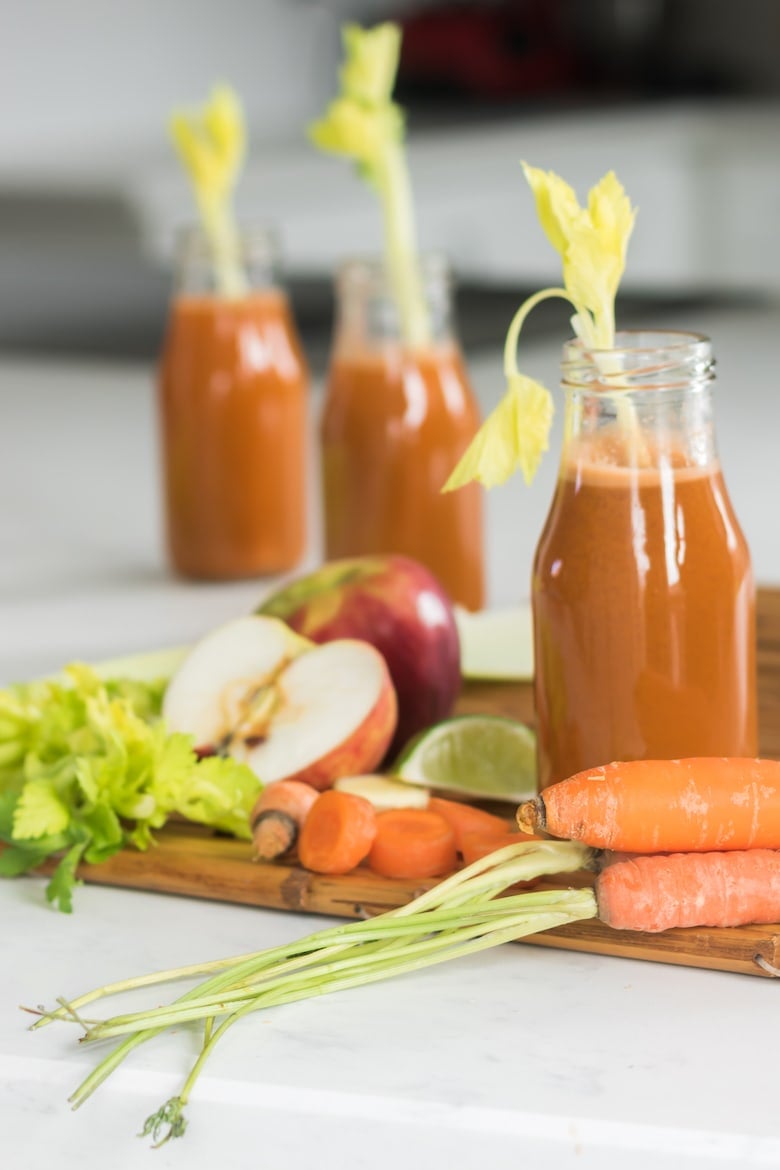
Tips for enjoying juices and controlling blood sugar levels
- Focus more on vegetables than fruits when making juices. Generally, I’ve found that 80% vegetables and 20% fruits work quite well.
- Watch your portion size. I would say start with a small serving and see how it affects your sugar control. Work with your diabetes educator to come up with a plan that works for you.
- Accompany your juice with some protein and/or fat. This will add bulk and will help to slow the absorption of the natural sugar in your juice and reduce the spike in your blood sugars.
- Keep well-hydrated. If you’re not drinking enough water during the day, your blood sugars will spike more because you’re blood will be concentrated with sugar.
- Get movin’ because physical activity will help to bring your blood sugars down by clearing it from your blood and giving it to your exercising muscles to use as fuel.
How to make it
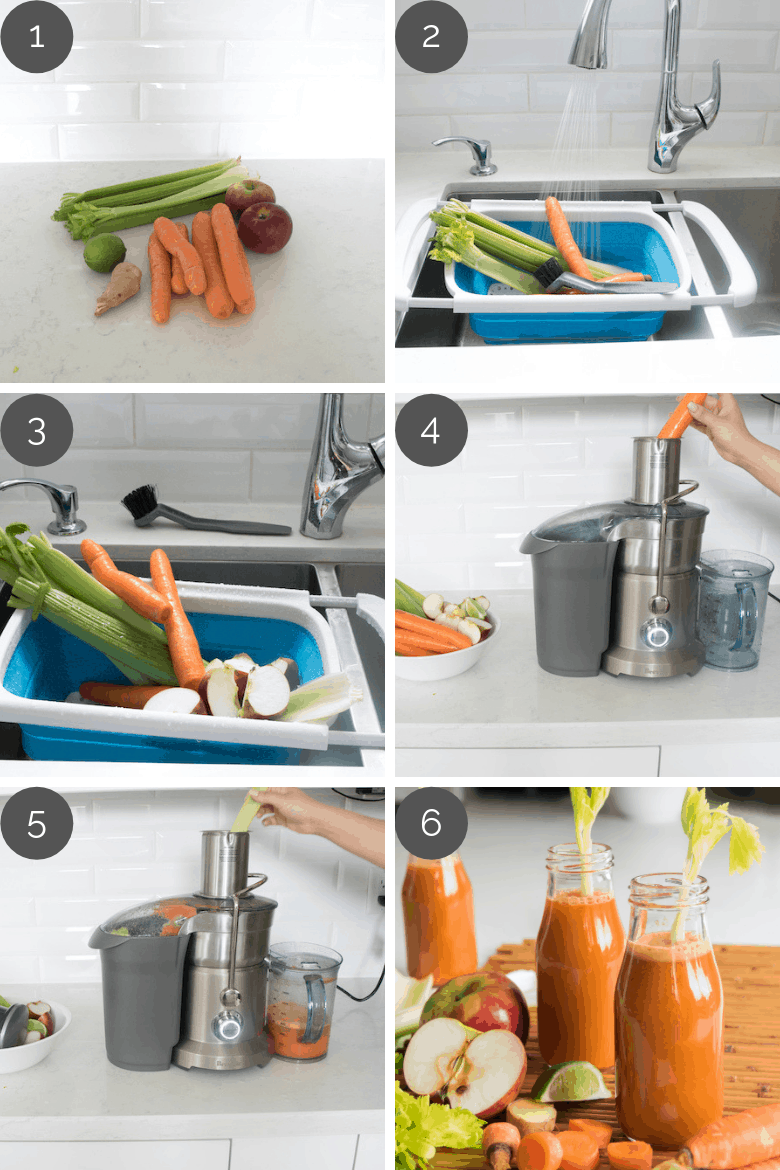
Five ingredients and two steps are all that’s needed to make this carrot juice.
Wash (thoroughly), and prep all your fruits and veggies (Images 1-3) as per your juicer’s instructions and juice away (Images 4-6).
More delicious drinks you might like:
- Easy Golden Milk Turmeric Coffee
- Caffeine Free Chai Latte
- Chia Peach Green Smoothie
- Superfood Green Smoothie Bowl
If you try this recipe, would love to hear from you! Leave a comment, rate it, or share a photo and hashtag with #desiliciousrd on Instagram, Facebook and Twitter! I can’t wait to see your photos.
Video
Ingredients
- 6 carrots, large, washed, ends removed
- 6 stalks celery, large, washed
- 2 apple, Ambrosia, large, washed
- 1 wedge lime, with skin
- 1 inch ginger, fresh
Equipment
- Juicer
Instructions
- Thoroughly wash and prep all ingredients as per your juicer’s instructions
- Juice all ingredients. Add ice and serve immediately
Notes
Tips for Enjoying Juices and Controlling Blood Sugar Levels
- Focus more on vegetables than fruits when making juices. Generally, I’ve found that 80% vegetables and 20% fruits works quite well.
- Watch your portion size. I would say, start with a small serving and see how it affects your sugar control. Work with your diabetes educator to come up with a plan that works for you.
- Accompany your juice with some protein and/or fat. This will add bulk and will help to slow the absorption of the natural sugar in your juice and reduce the spike in your blood sugars.
- Keep well-hydrated. If you’re not drinking enough water during the day, your blood sugars will spike more because you’re blood will be concentrated with sugar.
- Get movin’ because physical activity will help to bring your blood sugars down by clearing it from your blood and giving it to your exercising muscles to use as fuel.
Nutrition Information:
Keep in mind that the nutritional values provided are approximations and suggestions, and might fluctuate depending on ingredient variations, portion sizes, and recipe adjustments. This nutrition facts table cannot account for your individual needs. Your body — including your hunger and satiety cues — change daily. It’s perfectly fine to eat more or less on different days. Instead of letting food guilt take over, consider mindful eating.
* Percent Daily Values are based on a 2000 calorie diet.


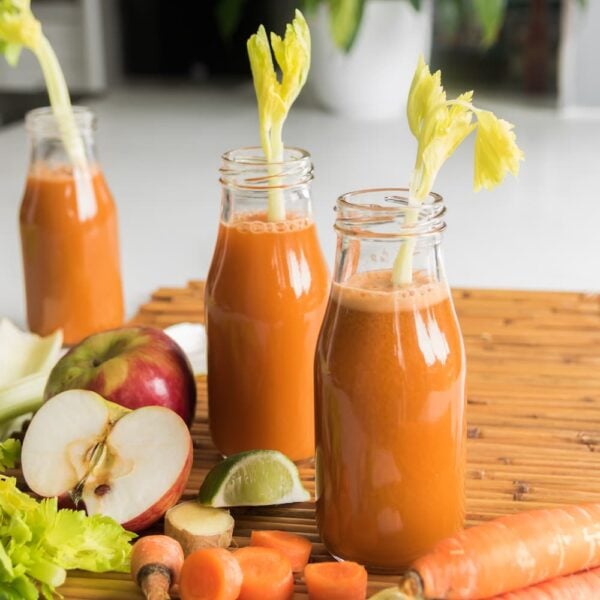
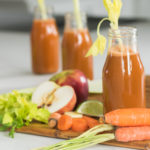
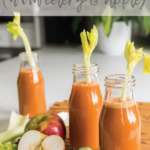
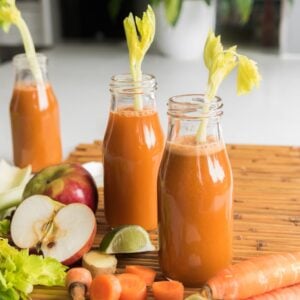

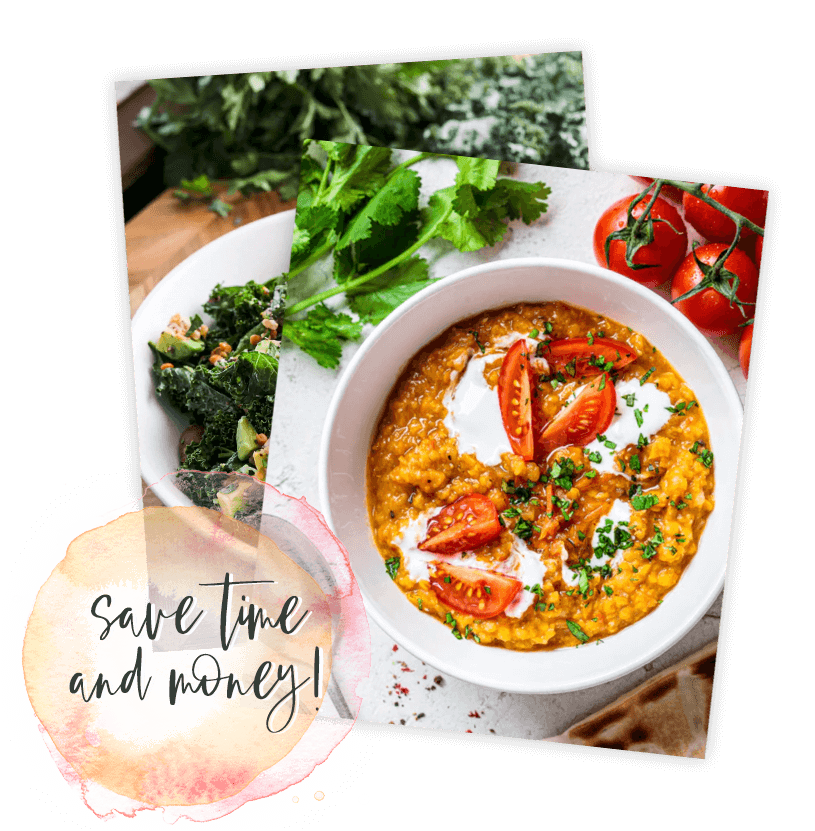


This is exactly the juice that I learned from my mom. Thank you for the added ginger and lime. I appreciate you doing this!!
No way!! I hope it bought lovely memories for you 🙂